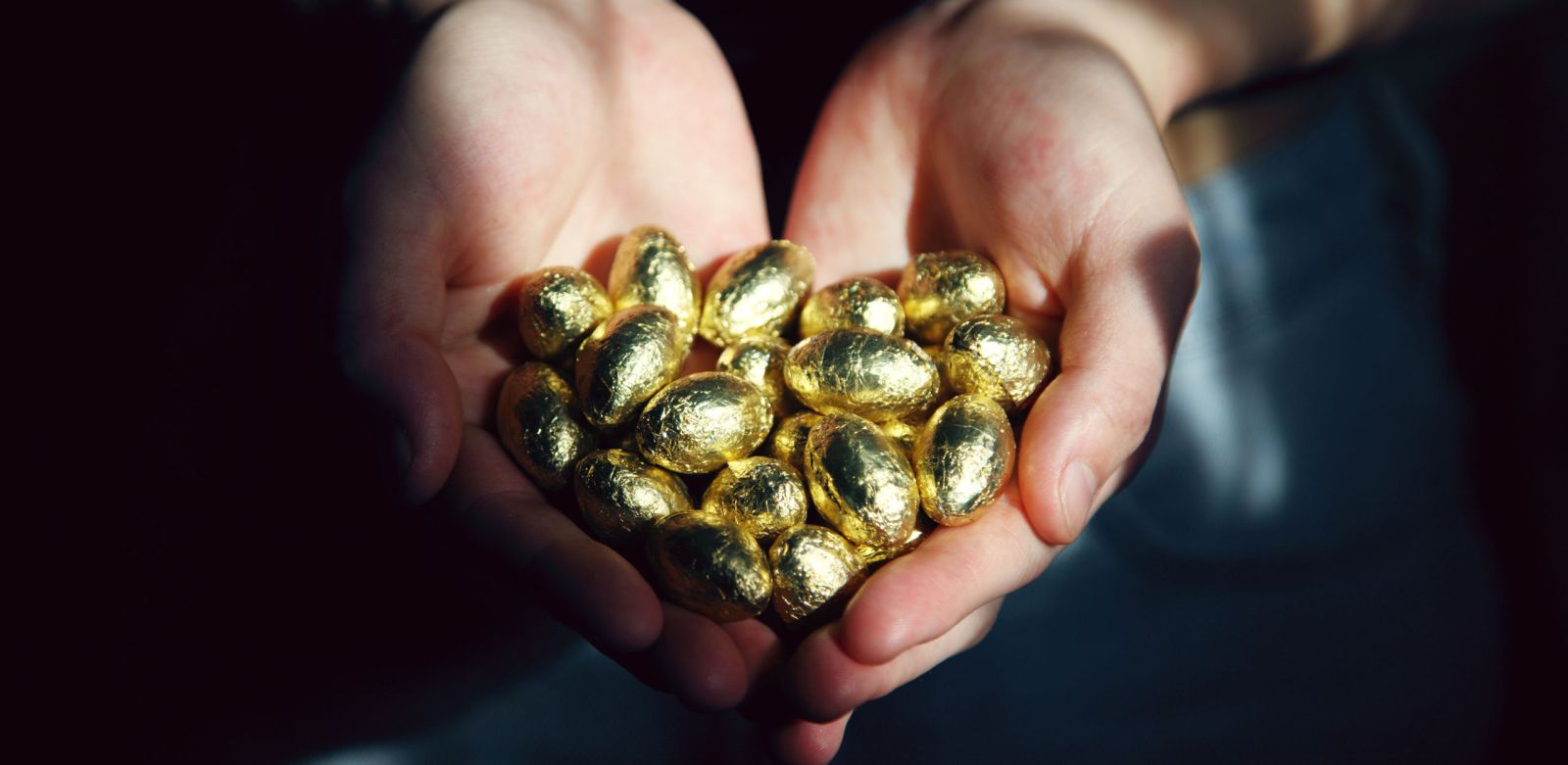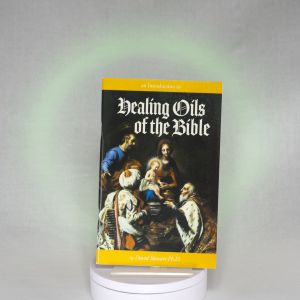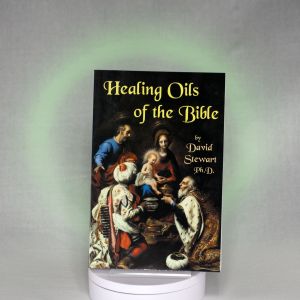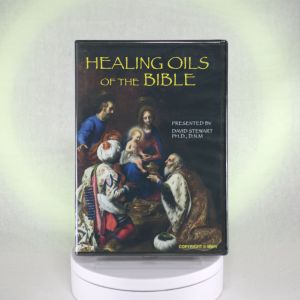This website uses cookies so that we can provide you with the best user experience possible. Cookie information is stored in your browser and performs functions such as recognising you when you return to our website and helping our team to understand which sections of the website you find most interesting and useful.
Wealth and Spirituality: Are They Compatible Or Contradictory? – Volume 5, Number 1
Please feel free to share this newsletter!


Raindrop Messenger
Official Newsletter of CARE
The Center for Aromatherapy Research and Education
12923 BCR 800, Marble Hill, Missouri USA 63764
(573) 238-4846
NOTE: The information in this newsletter is intended for education purposes only. It is not provided in order to diagnose, prescribe, or treat any disease, illness, or injured condition of the body or mind. Anyone suffering from any disease, illness, or injury should consult with a physician or other appropriate licensed health care professional.
Wealth and Spirituality: Are They Compatible Or Contradictory?
by David Stewart, PhD, DNM
Originally Posted January – February 2007
1. Wealth and Spirituality: Are They Compatible Or Contradictory?
by David Stewart, PhD, DNM, IASP*
A lot of Young Living Distributors, as well as a lot of people in general, have a problem resolving what seems to be a conflict between wanting to be of unselfish service to others and making money from offering that service. There is a verse in the Bible saying “It is more difficult for a rich man to enter the kingdom of heaven than for a camel to pass through the needle’s eye.” The phrase, “Needle’s Eye,” to which Jesus alluded was in reference to a particularly narrow gate into the city of Jerusalem through which camels could pass only by getting on their knees, not an actual needle. A misunderstanding of this verse has caused many to conclude that being rich, per se, is incompatible with living a spiritual life that is of service to others and pleasing to God. Nothing could be further from the truth. Here’s why.
First of all, there is another scripture you need to note. It is a letter (III John 2) to a person called Gaius, an early church leader. The salutation begins: “Beloved, I wish above all things that you may prosper and be in health, even as your soul prospers.” In other words, John is saying that God wants us to prosper on all levels – materially, physically, and spiritually. There is no conflict in this. It is not one or the other. Material and spiritual prosperity are, in fact, related.
The Jews have a proverb: “Your wealth is a measure of your service to others.” In other words, successful business people have to offer something of value to the public or the public won’t buy their wares or services. So the more of your wares or services people buy, the more people appreciate and find benefit from what you offer. Hence, the more income you generate from what you offer in your business, the more people you have helped, and the greater has been your service to humankind.
Of course, in order to be true, this statement also requires that what you offer is actually beneficial and not harmful like selling drugs, etc. It is possible to become financially wealthy and engage in evil enterprises. But we are not talking about that. John’s Third Letter (verse 11) also says “He that does good is of God: but he that does evil has not seen God.” It does not matter if you are wealthy or poor, evil is evil and good is good. The point being that wealth is not contradictory to doing good. In fact, to do the most good in the world, affluence is an asset and, on some level, essential to accomplishing your charitable intent. As for offering oils to the public, how good is that? It is a blessing to everyone.
It is rare that a person living in poverty can make any great contribution to the welfare of others when they have to spend all of their time just surviving themselves. One needs a level of affluence to afford to be generous with both their time and their resources.
However, if you personally choose poverty as a way to focus on God instead of focusing on self-serving human desires, like Sister Theresa, things are different. Even Sister Theresa, while choosing a simple lifestyle for herself, needed to attract many contributors to support her cause, without which her work would have been limited. So the principle of affluence applies even in cases like hers. In fact, spiritual people of wealth often choose to live comfortable yet frugal lives in order to give more in material goods and service to others.
Jesus came to bring a Gospel that would last for the ages. Even though once he began his ministry and did not engage in an occupation that generated income, he could not have carried out his ministry full-time without financial assistance. In Luke 10:7 he told his disciples, “The laborer deserves to be paid.” Those whom he and his disciples served were expected to provide food, lodging, and the necessities of life.
Jesus, himself, came from a comfortable upper middle class family whose breadwinner, Joseph, was a successful carpenter, an occupation that was above average and well-paid in those days. Jesus’ disciples were not poor either, otherwise they could not have been able to engage in a full-time ministry without placing undo hardship on their families. James, John, Andrew and Peter owned a fleet of fishing boats. Matthew was a wealthy tax collector and use his accumulated resources, including his palatial home, to support the Gospel mission. St. Paul had a tent-making business and, in addition to the contributions received from those whom he served, he supported his missionary travels from his own pocket.
Jesus also had wealthy friends including Nicodemas who owned an Inn, Joseph of Arimathea who was a wealthy sea merchant engaging in international trade, and Lazarus who was a well-to-do land owner who often provided food and living quarters for Jesus and his disciples. In Luke 8:1-3 we learn that there were many wealthy women who provided for Jesus and his disciples “from their resources.” These included women of political status such as Joanna, a member of Herod’s Court.
Jesus built his church on network marketing principles. He personally sponsored more twelve people who, in turn, sponsored hundreds who, in turn, sponsored thousands and ultimately millions reaching down through the centuries to the present. Network marketing is simply sharing what you have in a way that those receiving will have everything you have, be it spiritual goods or material. Because we live in a material world, material resources are necessary. Network marketing is the perfect vehicle by which the spiritual and the material can work together in mutual support.
I like the concept of this Jewish proverb where your income is considered a measure of your service. Of course, it needs some interpretation and adaptation. If you offer a harmful or debilitating product, like cocaine, you might make a lot of money, but will have no spiritual satisfaction nor joy in your trade. In general, and properly taken, the proverb is true.
As Young Living distributors, we offer fantastic products and services that benefit everyone. So, the bigger your YLEO business, the more people you sponsor, the more people you train to sponsor others, and the more people you teach about how to use the oils, the more people you will be blessing and serving. As a Young Living Distributor, as you grow in service to others, so will grow your financial rewards.
By maintaining an attitude of generosity toward everyone (not just your own downline), you will develop a magnetism that will draw people to you. When that happens, it is God honoring you for your unselfish attitude and helping you build your business. This is God choosing you as one whom he trusts to send his children for help when they need these oils and your instructions.
In Young Living, your unselfish service and your income are directly related, just like the proverb says. The more people you reach and teach, the more you receive. It is God’s law. “Whatsoever a man sows, that shall he also reap.” (Galatians 6:7) And this is not to mention the friendships you will make and the spiritual rewards you will gain.
2. When is the Best Time to Take Oils Internally?
by David Stewart, PhD, DNM, IASP
Essential oils that are certified by the FDA as “GRAS” (Generally Regarded As Safe) may be taken orally and swallowed. The “Essential Oils Desk Reference” (EODR) has a list of such oils, Appendix C, page 431. Young Living’s booklet, “Essential Oil Users Guide” also has a table denoting which oils are regarded as safe for internal use.
Personally, I take a capsule of clove or Thieves(R) containing 10-12 drops almost every day in order to support my immune system, maintain my health, and add productive years to my life. In so doing, the question arises as to when is the best time to ingest essential oils for maximum benefits.
The acid in your stomach can destroy a good portion of any essential oil, even up to 80%. Eating essential oils when your stomach is acid requires taking several times the dose as would be required if your stomach were not acid.
The good news is that your stomach is not always acid. It produces acid only when it needs to do so. For the most part, this is only when you have eaten proteins. This includes meat, fish, nuts, grains, and dairy products. If you eat a meal consisting entirely of raw fruits and vegetables, your stomach does not secrete any acids for these since their natural living enzymes are sufficient for the digestion process.
Therefore, for maximum benefits from minimum dosages of ingested essential oils, take them on an empty stomach before eating protein, or with a fruit or vegetable juice, or with raw fruits or vegetables. Putting them in your Ningxia Red juice is a perfect way to receive them. You can mix the oils with your drinks or foods or swallow them in capsules. In this way, you get the benefit of all of the oil, not just part of it.
As for me, I take mine first thing in the morning as I enjoy my Ningxia Red “start-the-day-right” cocktail.
3. Medical Journal says Lavender and Tea Tree Pose Risks: Are They Right? Or Wrong?
by David Stewart, PhD, DNM, IASP
A recent issue of the New England Journal of Medicine (NEJM), contains an article linking certain dangers to lavender and tea tree oils. The article has four authors, two PhD scientists and two MDs, whose research was under the auspices of the National Institutes of Health (NIH). Their negative claims were carried in major newspapers nationwide and were widely broadcast by TV news networks. Among other places, they are reported and archived on www.CBSNEWS.com under their Healthwatch column. The article is entitled, “Prepubertal Gynecomastia Linked to Lavender and Tea Tree Oils.” (NEJM, Vol. 356, No. 5, pp. 479-485, Feb 1, 2007)
Gynecomastia is an abnormal enlargement of one or both breasts in men or boys. It is rare, usually temporary, and benign. It tends to subside spontaneously. Doctors call it an “idiopathic condition,” which is their way of saying, “We don’t know what causes it.” The condition is related to a hormonal imbalance that could be from a variety of causes, including estrogenic or steroidal medicines or other products. The article postulates that the estrogenic properties of lavender and/or tea tree oils may have been the causative factor for three boys who developed prepubertal gynecomastia. I have a complete copy of the article which I obtained directly from NEJM and which review here.
The first thing you need to know is that the NEJM is supported financially by drug company advertisements. Instead of a place where only objective science on the cutting edge of research is reported, on the contrary, only articles that coincide with pharmaceutical agendas are accepted for publication. The purpose of a peer review journal is not so much for the preservation of scientific integrity as it is for the preservation of a prevailing paradigm. Since the prevalent paradigm in medicine is pharmaceuticals, any article that serves to discredit any alternative to drugs is readily accepted by medical journals and widely publicized. Thus, the motives of the NEJM in accepting this article are suspect.
Secondly, this research was reported as under the sponsorship of the NIH, a supposedly objective government agency. Reading the fine print at the end of the article we find that it was actually financed by at least six drug companies: Eli Lilly, Genentech, Novo Nordisk, Pfizer, Tercica, and Serono. Why would drug companies put money into essential oil research unless they were sure it would be reported as negative? You figure it out. If the drug and medical industry, who are in competition with aromatherapy, actually found benefit in essential oils through their research, do you think they would publish that? You know the answer. On the other hand, if they can find anything of an negative nature to discredit competitive modalities, such as the practice of aromatic science, do you think they would publish that? Of course they would. And they did.
The fact that the television networks picked up on this obscure article and publicized their alleged findings nationwide is explained by the fact that television, itself, is largely supported by drug advertising. Hence, one cannot expect unbiased reporting from TV news programs when it comes to drugs and alternatives to drugs. Their financial existence depends on catering to the pharmaceutical companies.
The third thing to note about this study is that involves only three boys, ages 4, 7 and 10 years of age. In the four-year-old boy’s case, his gynecomastia manifested after his mother had applied a “healing balm” containing lavender. The composition and brand name of the “balm” were not identified so it was not verified whether or not other ingredients in the balm could have contributed to the condition. The condition disappeared within four months with no special treatment other than discontinuance of the balm.
In the 7-year-old boy’s case, he was using a lavender-scented soap and body lotion following which he developed gynecomastia. His twin brother also used the soap and lotion, but did not manifest any such symptoms. Here, again, the composition and brand of the scented products were not noted in the article. The condition disappeared completely a few months after discontinued use of the soap and lotion.
In the 10-year-old boy’s case, his gynecomastia was reported as having been present for about five months when his mother brought him to the doctor for an opinion. He was regularly applying a styling gel to his hair and scalp and also used a shampoo, both containing lavender and tea tree oils. As in the other two reports, the researchers failed to identify the brands and composition of the products containing the oils. Within nine months after discontinuing use of the gel and shampoo, the condition was no longer present.
In none of these cases was the grade or quality of the essential oil checked or made known. Apparently, it was perfume grade oil, which is quite different from pure therapeutic grade oils. Furthermore, in order to establish a causative relationship, there needs to be a control group of young boys using these products. Since these are commercially available products, it can be assumed that thousands of consumers have used and are using these products so that a potential control group already exists and only needed discovery and polling to obtain statistical numbers for the study. However, this was not done by the researchers.
This research report is based on such a small number of people and products, it has no statistical significance or scientific validity. It consists of descriptions of three boys each using different, undescribed, products: a balm, a soap, a lotion, a gel, and a shampoo. No two of the boys were even using the same products. Hence, this was an account of only one case per product. This article is actually not a legitimate study of the prevalence of gynecomstia related to essential oils, as was implied and as was reported in the media. It is a set of three anecdotes based on one sample each of five commercial products whose chemistry and composition were not given.
Rather than studying the chemistry, composition, and effects of the alleged guilty products with all of their ingredients, these researchers focused their article on the estrogenic properties of lavender and tea tree where, again, they did not identify the grade of oils from which they obtained their data. Neither did they determine the concentration of essential oils contained in the products, which would be a crucial bit of information for drawing valid conclusions.
They did no studies on the products, themselves – only on the general properties of lavender and tea tree oils. Studying the properties of a single ingredient in a mixture is not a valid way to ascertain the properties of the mixture. By studying the individual properties of cocoa, flour, salt, baking powder, sugar, and eggs, without regard to their amounts in a recipe, can one ascertain the properties of a brownie?
While it is true that lavender and many other essential oils can affect both male and female hormones, we know that for pure therapeutic grade oils these effects are toward balance, not toward imbalance as would be indicated by gynecomastia. Therefore, if the oils in the balm, soap, lotion, gel, and shampoo, were actually the culprit, such a result would speak to the quality of the oil, not the species.
Lavender and tea tree oils are two of the most popular essential oils in the world, having been used for centuries and applied by millions. If they were problematic in upsetting the hormonal balance of pre-puberty boys, why was this not noticed before, decades or even centuries ago? How can trace amounts of essential oils in chemical products such as shampoo and body lotion be the cause of observable side effects such as gynecomastia when using concentrated, undiluted therapeutic grade oils have never been associated with such effects? Gynecomastia is not a symptom that would escape unnoticed.
To summarize, let’s just say that this report is from a source that is suspect, that its research modality is seriously flawed, and that it was publicized by a news media biased in favor of drug therapies and financed by the drug industry. I count it as just another attempt on the part of the pharmaceutical/medical cartel to cast dispersions on an effective modality that has a higher success rate than theirs.
If benign gynecomastia is the worst side effect that scientists working for drug companies can find as evidence against the practice of aromatic science, then that speaks well for what we do as advocates for oils. Let’s put this NEJM article in perspective. Compare temporarily enlarged breasts to the negative side effects of prescription drugs, which include chronic sickness, disability, and death. No one has ever died or gotten seriously sick from commonsense applications of essential oils. But as for gynecomastia, there are plenty of drugs that do that.
THE RAINDROP MESSENGER
Official Newsletter of CARE
The Center for Aromatherapy Research and Education
12923 BCR 800, Marble Hill, Missouri USA 63764
(573) 238-4846
NOTE: The information in this newsletter is intended for education purposes only. It is not provided in order to diagnose, prescribe, or treat any disease, illness, or injured condition of the body or mind. Anyone suffering from any disease, illness, or injury should consult with a physician or other appropriate licensed health care professional.
The Care Calendar
Topics covered in the Raindrop Messenger:
- Advanced Bible Oils
- AFNOR
- Allergy Season
- Allopathy
- ALOES/SANDALWOOD
- Ancient secrets of essential oils
- Annual CCI Summit
- Anointing
- Aroma Life
- Aromatherapist
- Aromatherapy
- Aromatherapy Certification
- Arthritis
- Believer
- BIBLE OILS
- Biblical Oils
- Birch Oil
- Black Widow
- Body Systems
- cancer
- CARE Chemistry
- CARE Classes
- CARE INTENSIVES
- CARE Seminars
- CARE Summit 2024!
- CARE training
- Carvacrol
- CCI Certification
- CCI Summit 2024
- CEDARWOOD
- Center for Aromatherapy Research and Education
- Chakras
- Charging for Raindrop
- Chemistry
- Chemistry of Essential Oils
- Chemistry of Essential Oils Made Simple
- Chemotypes
- cleanses
- Clover
- Continuing Education Credit
- CYPRESS
- Dangers Of Prescription Drugs
- Detoxifiers
- Developing Gratitude
- DI GIZE
- DIAMOND
- Do All You Can
- Earthquakes
- Elderberry
- ELECTROMAGNETIC FIELD
- EM FIELD
- Emotional Release
- Energize
- ENZYMES
- Essential Oils
- ESSENTIAL OILS FOR INTUITIVE PURPOSES
- Essiac tea
- Exodus Supplement
- Feelings Kit
- Flu
- Focus
- Frankincense
- FREQUENCES
- GALBANUM
- Garlic
- Gary Young
- Ginger
- Goals
- god's love
- Gold
- Gold Frankincense Myrrh
- Grapefruit
- Growth
- Habits
- Harmonies Melodies & Symphonies with Essential Oils
- Heal Your Body
- Healing
- Healing Oils Of The Bible
- Helichrysum
- HERXING
- History of Anointing Oils
- Holy Anointing Oil
- Holy Incense
- Homeopathy
- Homeostatic Intelligence
- HYSSOP
- IASP
- Institute for Energy Wellness Studies
- Integrated Aromatic Science Practitioner
- Joy
- laughter
- Lavender
- Learn Raindrop
- Lee Stewart
- Legal
- lemongrass
- linen
- Liver
- Look Ahead.
- Love
- Lyme Disease
- Mind-Body Connection
- Mint
- Myrrh
- NAT
- Natural
- Natural Molecules
- Neuro-Auricular Technique
- never give up
- new age
- Ningxia
- Ningxia Red
- Non-Nutritive
- Nova Vita
- Ocotea Oil
- Oils of ancient scripture
- Onycha
- ORAC SCALE
- Oregano
- Oregano oil
- Overcoming Diabetes
- patchouly
- Peruvian Chocolate
- Pest Control
- pheromones
- phosphoric acid
- Photoxicity
- POO-ROMATHERAPY
- Practitioner
- Preparation
- Protocel
- Pure Therapeutic Grade Essential Oil
- Quantum Physics
- Raindrop
- Raindrop certification
- Raindrop Classes
- Raindrop instructors
- Raindrop teachers
- Raindrop Technique
- Raindrop Technique Training
- Raindrop Training
- Raindrop Without a License
- RC Blend
- ringing in the ears
- Rose Essential Oil
- ROSE OF SHARON/CISTUS
- Rose Oil
- Safe Insect Repellants
- scar-b-gone
- Science Of Essential Oils Made Simple
- Sensitivities to Essential Oils
- sick building syndrome
- SPIKENARD
- Stay Positive
- staying healthy
- Success
- Supervisor Training
- Synthetic Compounds
- tansy
- Tea Tree
- The Blood Brain Barrier
- the Ecuador Clinic
- THE FIRST IMPRESSION TECHNIQUE
- the Mind-Body Connection
- THE PRAYER OF JABEZ
- The Quantum Connection
- THE SLEEP TECHNIQUE
- Therapeutic Grade
- Thieves Household Cleaner
- Thieves Oil
- Thyme
- Thyme Oil
- Tinnitus
- Tonya Peterson
- Transformation
- Transformation Oil Blend
- Twelve Questions to Ask Those Who Invite You to Join Another Company
- unresolved emotions
- valor blend
- Vitaflex
- water
- Wealth and Spirituality
- Wintergreen
- Wolfberries
- Ylang Ylang
- YLEO
- Young Living business
- Young Living Essential Oils
- Young Living Oils and Products
Shop this issue of the Raindrop Messenger
Read more issues of the Raindrop Messenger
In each issue of The Raindrop Messenger you will find articles and essays on a variety of topics related to health and longevity. Our hope is to be informative and, perhaps, inspiring to you for the benefit of your physical, mental, social, emotional, and spiritual life. The Raindrop Messenger is also a friendly way of keeping you abreast of CARE’s ongoing programs, activities and helpful books and videos.
The articles published in The Raindrop Messenger and in this archive are not copyrighted. You are encouraged to copy them, reprint them, and share them with friends. We would appreciate acknowledgment of their source by a statement to the effect.
By submitting this form, you are consenting to receive marketing emails from: The Center for Aromatherapy Research and Education. You can revoke your consent to receive emails at any time by using the SafeUnsubscribe® link, found at the bottom of every email. Emails are serviced by Constant Contact

I JUST WANT A RAINDROP!
Have a facilitator contact you!
The Center for Aromatherapy Research and Education, Inc. (CARE) and it's Certified Instructors have trained hundreds of Facilitators in the Raindrop Technique. Click here to get started.

Center for Aromatherapy Research and Education is approved by the National Certification Board for Therapeutic Massage and Bodywork (NCBTMB) as a continuing education Approved Provider.
CARE International Inc
12923 BCR 800
Marble Hill, MO 63764
Toll Free (800) 758-8629
Fax (573) 755-0365
Open 9:00 AM to 4:30 PM CST
Monday - Friday






